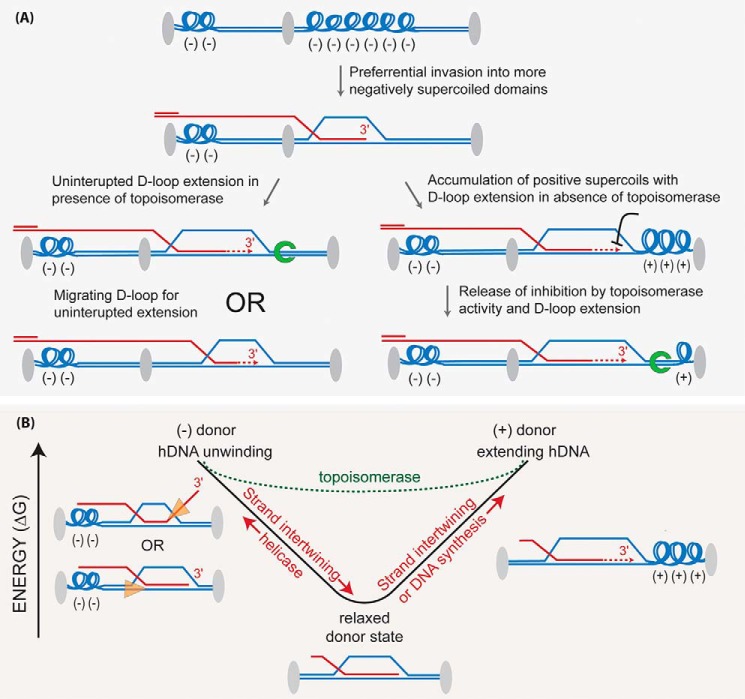Figure 3.
Topological considerations in DNA strand invasion. A, supercoiling density in various chromatin domains may influence the propensity to invade (invasion is a term inclusive of synaptic complex formation and hDNA formation through interwining of the invading strand) a particular domain in the donor. Synaptic complex formation initially relaxes the donor when the extended Rad51–ssDNA filament aligns with homologous bases present in the complementary donor strand, causing them to extend as well. Invading strand intertwining to produce hDNA is a separate consumption of the negative supercoils in the donor, and unlike synaptic complexes, hDNA is stable even in the absence of the bound proteins. The topological status of the donor will also influence the DNA synthesis step, as indicated in the figure and discussed in the text. Gray ovals indicate a specific DNA-bound protein(s), which creates discrete topological domains within linear chromosomes. Green horseshoe, topoisomerase. B, negative supercoiling creates an energy well that influences DNA strand intertwining or unwinding. Invasion into a supercoiled donor will favor stand intertwining as negative supercoils release their stored energy as they are dissipated, with a relaxed donor defining the lowest energy state. Once all negative supercoils are relaxed, extending hDNA through further intertwining, or DNA synthesis, will induce positive supercoils. Unwinding the D-loop in a relaxed donor by a DNA helicase will require they rewind negative supercoils in the donor. The dotted green line represents the altered energy landscape made possible by the action of topoisomerases, in effect making the energy well more shallow. Orange triangles depict DNA helicases and their translocation orientation to disrupt D-loops.

